The north coast of Bali provides a window into the island’s past. Here you’ll find a different kind of Bali, a haven for those looking to escape the tourist masses of the island’s south.
Once the busiest part of Bali, the island’s north coast is now less explored compared to its southern counterpart. The area is home to Buleleng regency, where you’ll find the north’s two biggest hubs: Singaraja, the old capital of Bali dotted with colonial buildings, and Lovina, a quiet beach town lined with boutique beach resorts and calm seas.
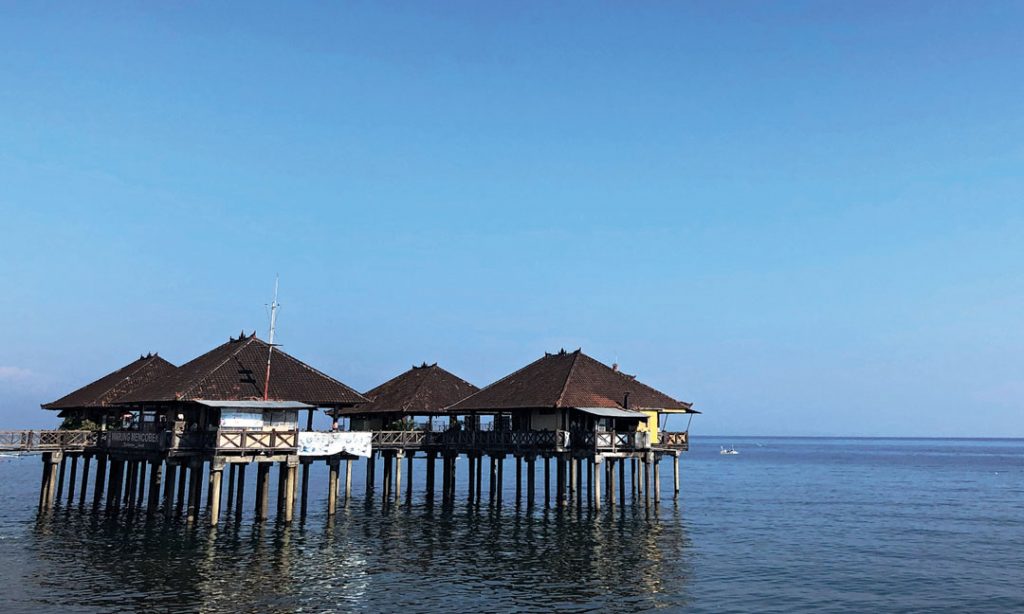
Singaraja, the capital of Buleleng regency and once the capital of Bali during the Dutch colonial time, is characterised by its colonial architecture, quiet residential areas, tree-lined avenues, rows of Chinese shops, and a densely packed merchant’s quarter south of the harbour. The name, meaning ‘lion king’, is taken after the name of the palace built in 1604 by I Gusti Anglurah Pandji Sakti, founder of the Buleleng Kingdom. It was the centre of the Buleleng Kingdom in the 17th and 18th centuries.
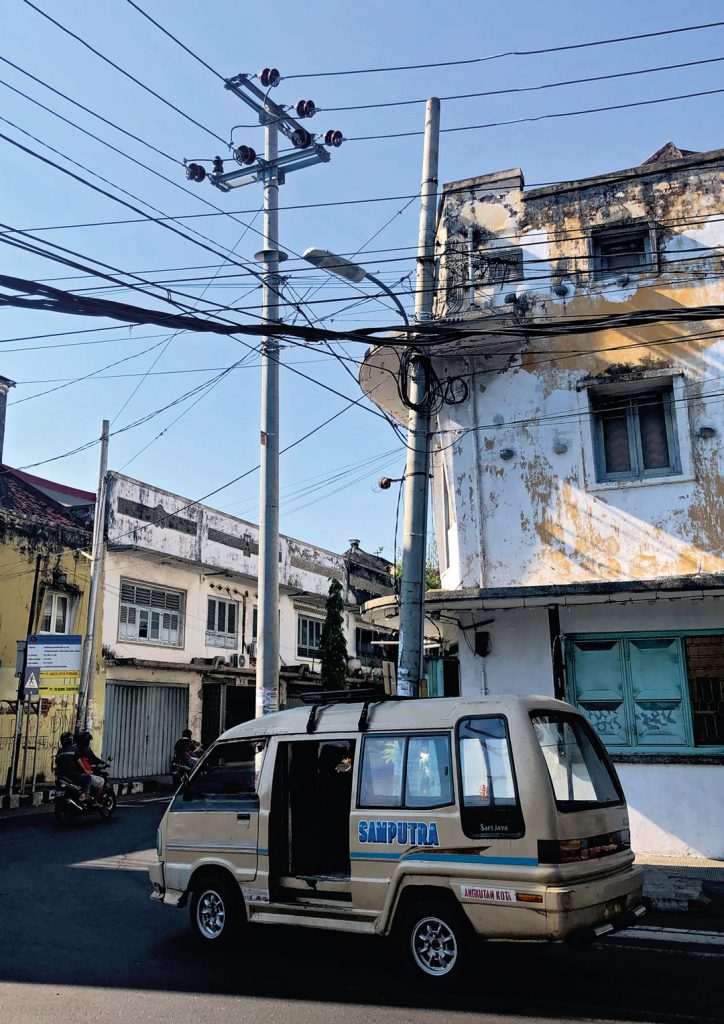
The old harbour of Singaraja was a busy hub, inviting merchants from all over Asia to trade exotic spices, arms, opium, livestock and coffee. These traders each brought with them their own cultures, which had a great impact on the cultural life of the coastal town. Around the beginning of the Christian era, merchants from India and China started to establish trading posts along the coast here. To this day a concentration of Chinese Buddhist traders and shop keepers can be found in the harbour district of Singaraja, living peacefully together with their Muslim and Hindu neighbours.
Nestled by the coast of Singaraja, on the old harbour area, is the old Chinese temple Ling Gwan Kiong. Referred to by the locals as a “klenteng”, this temple was built in 1873, upholding the Tri Dharma, the philosophy that blends Confucianism, Taoism and Buddhism, and a slight assimilation with the Balinese culture in terms of how the offerings are made.
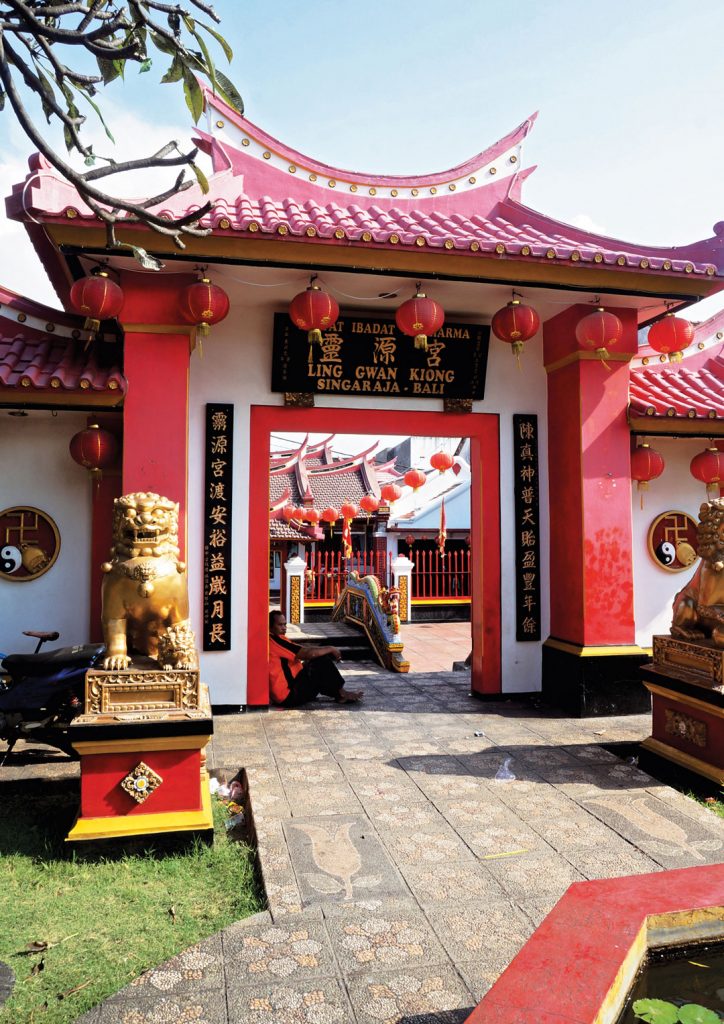
Ling Gwan Kiong is dedicated to Tan Hu Cin Jin, a holy man who is believed to have achieved moksha, the greatest afterlife achievement that liberates one from the cycle of birth and death. Known as samsara, the cycle is only experienced by those who practise the yogas, a series of worshipping that involves four elements: Karma Yoga (working for the Supreme), Jnana Yoga (acknowledging the Supreme), Raja Yoga (meditating to get closer to the Supreme), and Bhakti Yoga (serving the Supreme).
The temple stands out with its authentic Chinese architecture. The construction of bright red, yellow, and green colours against white walls is a beauty to behold in the old shopping district of Singaraja. Inside the temple, the walls are covered with old paintings from the 1650s that tell the story of the Chinese tale of the Three Kingdoms called San Guo Yan Yi, or known in Indonesia as “Sam Kok”. The tale, written by Lio Guanzhong, is about an era when China was ruled by three warlords after the fall of the Zhuo dynasty. The paintings are annually restored by the descendants of the painters.
While the paintings capture the conditions of that particular era, namely the conflicts between various warlords, the writing reflects Confucian teachings: The loyalty to one’s family, friends, and superiors is an important measure of a person’s virtue. From the literature of San Guo Yan Yi, we can also learn about how the religions in China first came to be.
The temple is frequented by those practicing the ancient Chinese religion. With that being said, Ling Gwan Kiong also welcomes people of all religious backgrounds for a visit and/or praying session. The temple caretaker is on standby most of the time. He said many practicing other religions have also come to the temple to enquire their future to Tan Hu Cen Jin – the ancestor the temple is dedicated to. The caretaker will assist those who come to make prayers regardless of their religion. He will organise the offerings and guide you through the prayers step by step.
From the temple you can wander the narrow streets and observe a raw, vibrant and crowded neighbourhood, where abandoned and decaying old coffee and tobacco warehouses are to be found along with Dutch-style shophouses in bad repair. Around noon time, you may hear an Arabic chanting on a loudspeaker, calling the muslims in the area to pray, and adding an Islamic flavour to an island that’s predominantly Hindu.
Away from the old harbour area, some 3 kilometres to the south, you’ll find Museum Buleleng. Mostly frequented by students, the museum commemorates the lives of the kings of Buleleng, including the last king, Pandji Tisna, known to be the one developing tourism in Lovina to the west. Here you get to learn about the history of Singaraja, and observe old photographs of the Buleleng kings, antique coffins, paintings, an antique car, an old typewriter used by the last king, as well as artefacts that portray the life in the north coast in the past. No admission is required to enter the museum, though we suggest that you give a donation to help the maintenance of the museum.
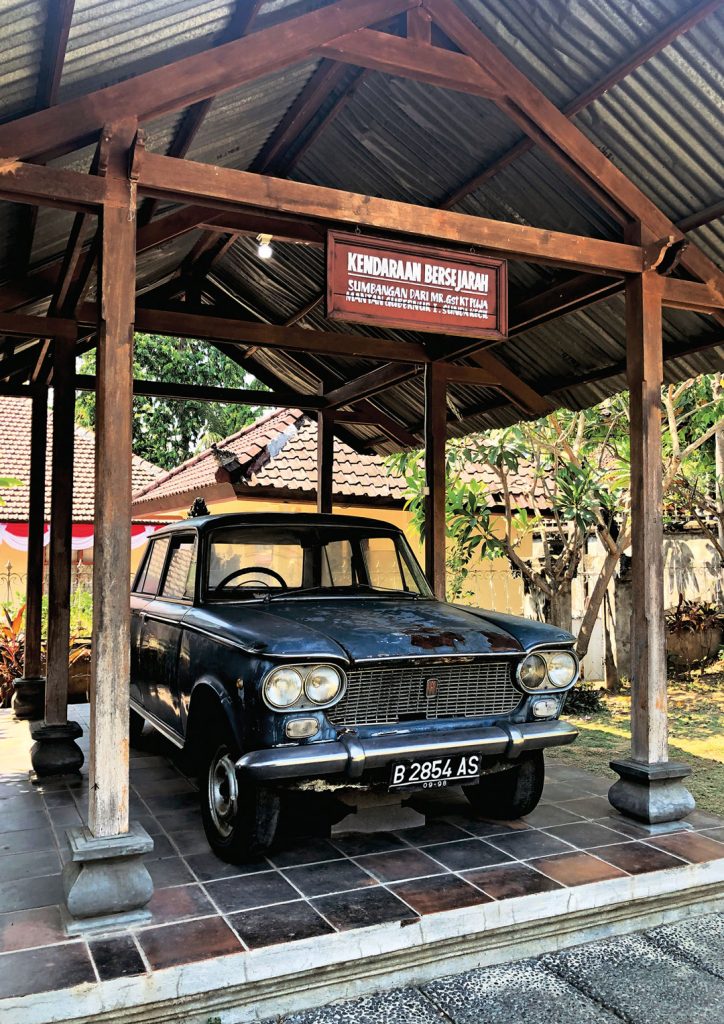
Museum Buleleng also makes a great pitstop, for there’s a big wantilan bale where you can cool off. Alternatively, you can lounge at the plaza found on the corner of the road across the museum, where you’ll found the statue of King I Gusti Anglurah Pandji Sakti on horseback.
Of course, when in North Bali a visit to Lovina is mandatory. Located some 10 kilometres away to the east from Museum Buleleng, the beach in Lovina spans approximately 2 kilometres and it encompasses several small costal villages with Kalibukbuk village as its main focal point. The Lovina beach is a great escape from the bustling, popular beaches found in South Bali such as Kuta, Legian, and Seminyak that are often, if not always, crowded. The waves here are calmer, providing a perfect spot for a swim.
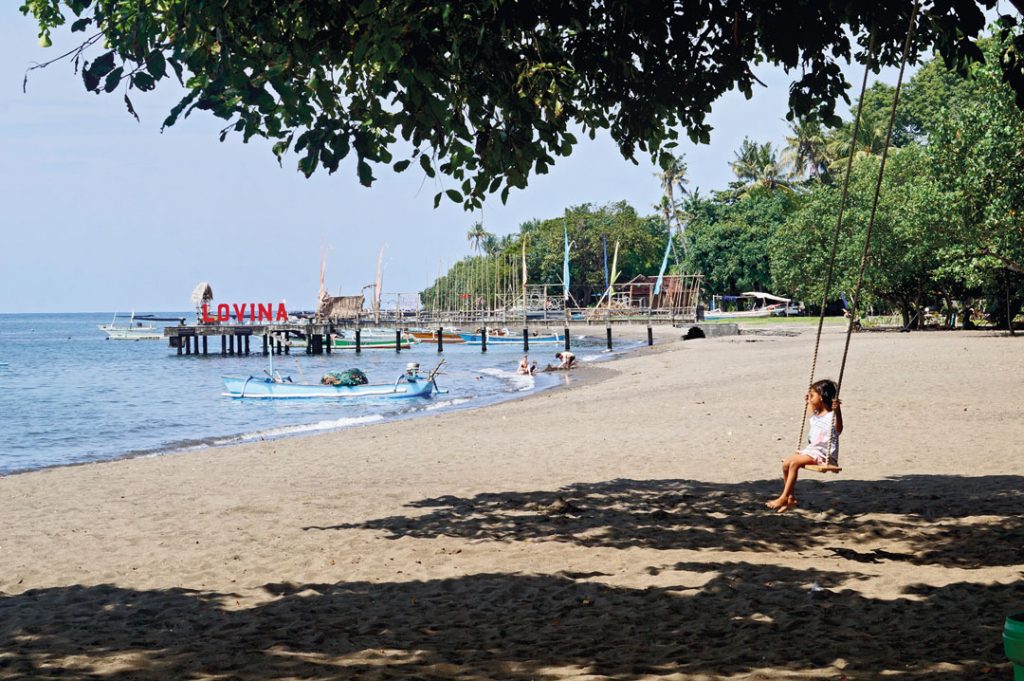
Entering the beach area, to where the dolphin statue is, you’ll pass a row of restaurants serving international food, along with hotels dotting the coastline. On the beach, you’ll find further rows of art shops and small warung stalls offering snacks and refreshments. Sunsets are also a highlight here, with a rather subdued nightlife after dusk. Though restaurants and accommodations are aplenty, Lovina is still far from busy especially if compared to the areas in South Bali. That said, with its quiet atmosphere and serene surrounds, Lovina is an ideal getaway for those seeking to escape the hustle and bustle of the island’s more popular tourist hubs. Here you’ll get to experience the sunrise dolphin trip, where you’ll observe pods of dolphins leaping out of the sea as they swim away from shore just as the day begins.
Following the Seririt-Singaraja main road, to the west of Lovina, you’ll encounter Pemuteran, an area that lies on the quiet northwest coast of the island, sandwiched between the West Bali National Park containing pristine coral reefs and tropical rainforest. Pemuteran is a small, laid-back fishing village that unfortunately still hasn’t received the number of visitors it really deserves. While the wonders of Pemuteran that we already knew and experienced astounded and enchanted us, a recent visit to the area, which gave us time to explore properly, introduced us to another grandeur the area has.
This was Pura Pabean, a space for worship and a architectural melting pot of Buddhist, Hindu and Islam influences. On the grounds that border the ocean, Pura Pabean hearkens to a nostalgic story of how the Balinese fishermen, sailors and traders from outside Bali used to come together to pray for a safe journey. The word ‘pabean’ itself, which translates to ‘customs’, implying that the temple was also a stopover for sailors centuries ago.
Right on the beach, two huge megaliths from earlier times disappeared into the sand in the 13th century, and were only rediscovered and re-erected in 1997 on their original positions. A good portion of the beach is covered by pebbles, where a horde of resident monkeys can be found playing around on. Today, the temple continues to be frequented by traders.
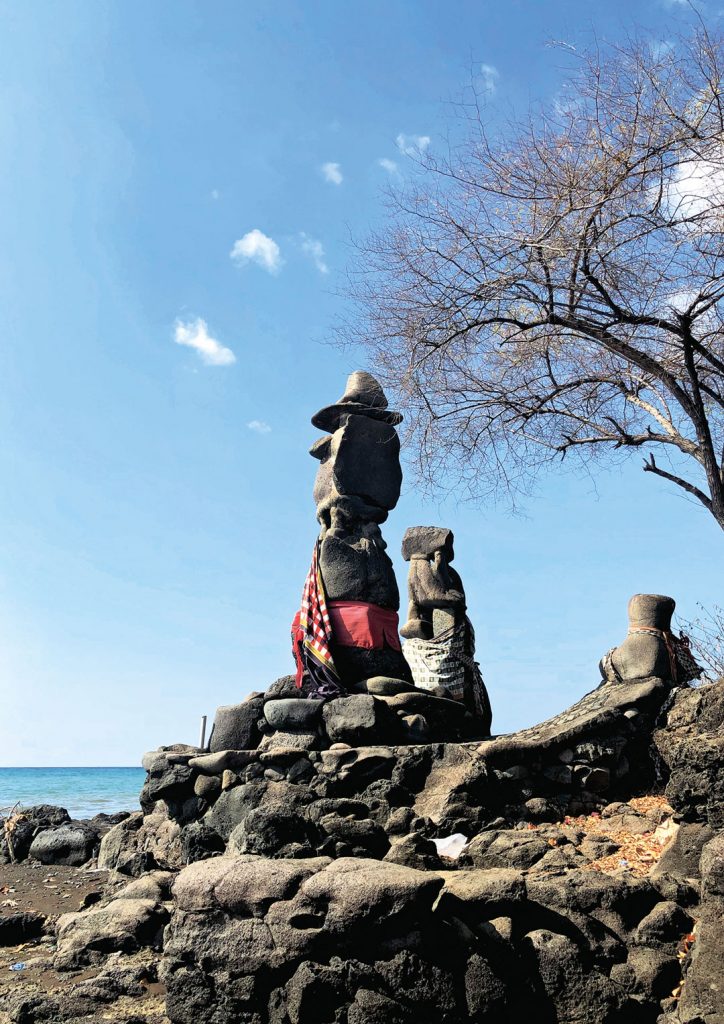
On the foothill directly in front of the ocean, and across Pabean temple, Pura Pulaki is another example of how cultures have blended in North Bali. Boasting the unique Balinese architecture and Chinese style, the temple’s main courtyard is never silent as it serves as the main hangout for the monkeys roaming the area; these cheeky creatures are always on standby to steal the fruits found in the offerings at the temple. But despite the noises coming from the monkeys, pilgrims at Pulaki seem to be able to do their prayers with full concentration.

The monkeys are said to be the ones escorting Dang Hyang Nirartha, a holy Hindu priest from Java, to the jungle where the temple currently nestles. Out of respect for the holy priest, the monkeys settled in the temple, guarding it.
The black stone gate of the Pulaki temple was built in 1983 and was inaugurated with a ceremony. Holy water from several temples from East Java to Lombok was used for the blessing. When you enter the temple, there are three stages. Once in the middle courtyard, you see on the left and right sides the green jungle hills and behind you is the vast ocean. You’ll still have to climb more stairs to get to the main courtyard where people pray and lay offerings.
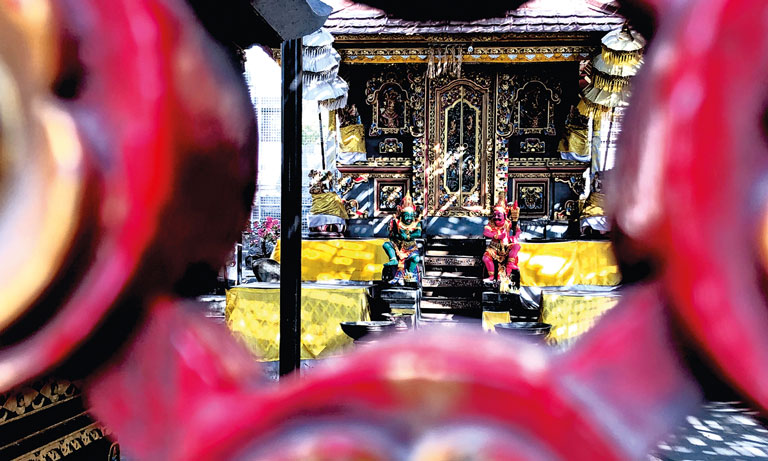
Entering both the Pabean and Pulaki temple compounds is only accessible with a sarong and sash. You can hire these at the entrances in exchange for donation. Be sure to take care of your belongings, as not to make the monkeys excited. The temple is also a convenient stop for truck drivers on their way to and from the ferry terminal in Gilimanuk, West Bali.







